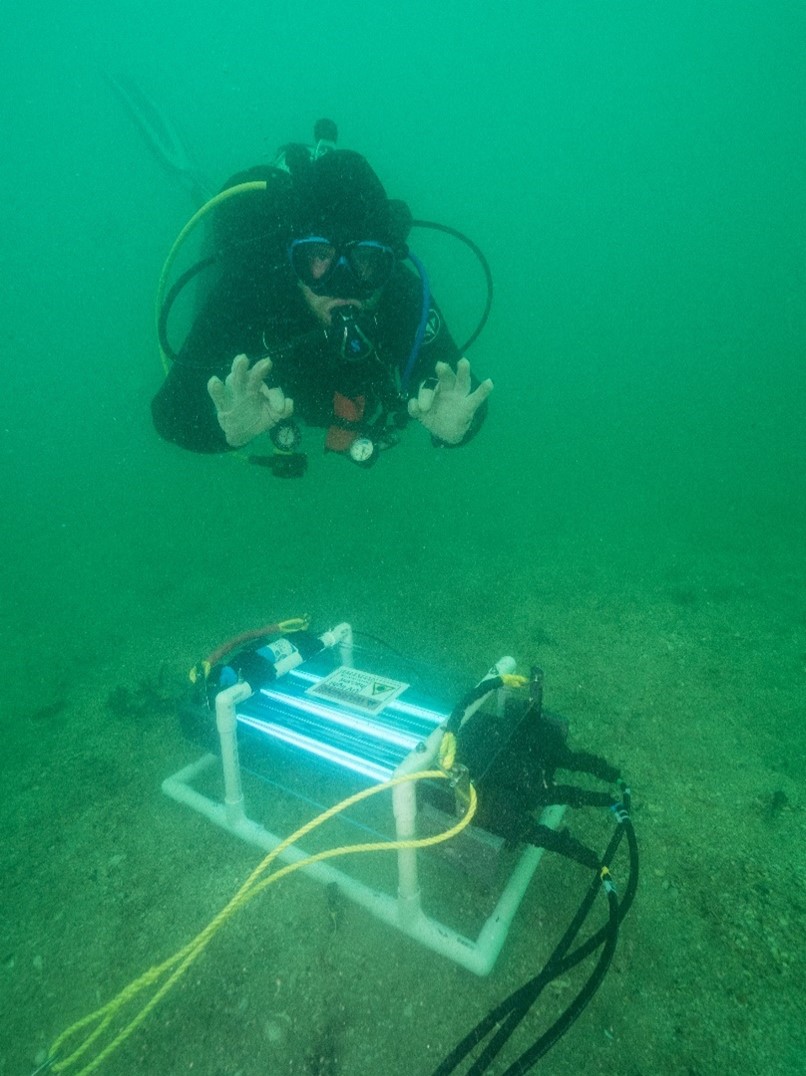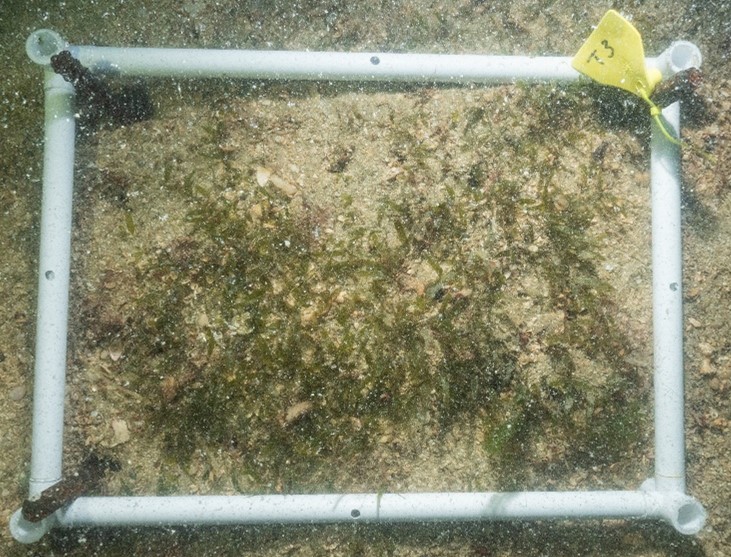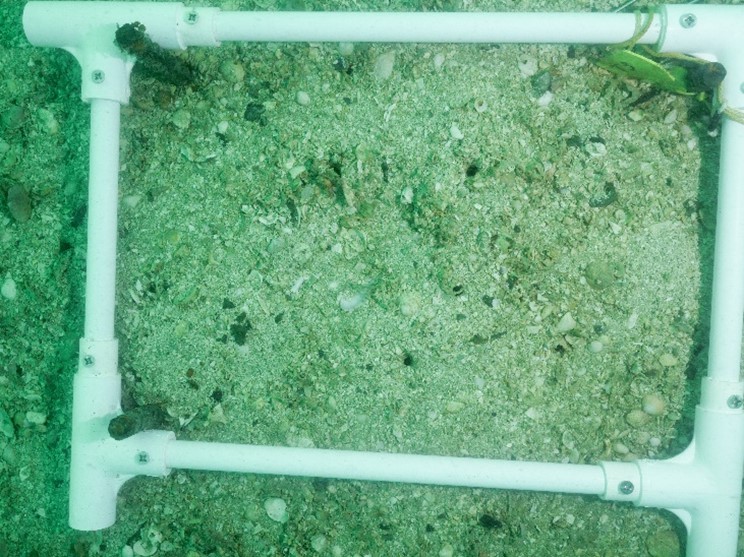A bright light is proving effective for killing Caulerpa seaweed, which is a rapidly spreading invasive seaweed in northeastern New Zealand.
A single dose of the ultraviolet light was found to kill over 90 per cent of the invasive seaweed in field tests at Rakino Island in the Hauraki Gulf funded by Auckland Council and undertaken by the University of Auckland.
The findings have great potential for helping with the control of the invasive seaweed, says Liz Brooks, Team Manager Pathways and Marine at Auckland Council.
Caulerpa has been causing serious concern since first discovered in coastal waters of Aotea -Great Barrier Island in mid-2021 and has since spread and been located at other coastal locations.
Elsewhere in the world invasions of exotic Caulerpa seaweed have been associated with loss of seafloor animals and fish life, due to the formation of dense smothering mats of seaweed across the seafloor.
The ultraviolet light, which is used for killing microorganisms in drinking water, appears also to be highly effective for killing Caulerpa on the seafloor using a powerful underwater lamp.
“The ultraviolet light works on the seaweed like sunburn, killing the tissues that are exposed to the light, says Brooks.
“Shaded parts of seaweed that are not affected by the light and any regrowth needs to be mopped up with subsequent doses of the ultraviolet light.” she adds.
Ultraviolet light has some potential advantages over the limited methods currently available for controlling Caulerpa seaweed including minimal disturbance of the seafloor and no fragmentation of the Caulerpa, which can lead to spread of the pest.
Although the field testing of the ultraviolet light has only been undertaken on a small scale at Rakino Island, work is progressing toward using the ultraviolet light for larger scale control of Caulerpa in coastal areas.

University of Auckland diver attending to UV-C lamp in operation treating Caulerpa parvifolia on the seabed at Māori Garden Bay, Rakino Island. The three parallel UV-C lamps are powered from the surface (black cables) with a white plastic frame holding the lamps above the seafloor to ensure adequate light coverage.
A UV-C dosemeter at the left end of the frame records the quantity of UV-C light arriving at the seafloor.


Underwater photographs of quadrat T3 (first shot above) on 24 June 2024 showing extensive cover of Caulerpa parvifolia and on (above) 31 July 2024 showing minimal remaining C. parvifolia cover after two treatments with UV-C.


